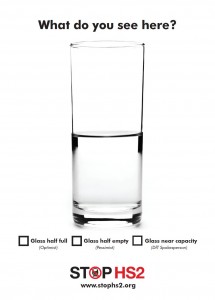The release of CCTV footage allegedly showing that Jeremy Corbyn passed both reserved and unreserved seats, before making a video from the floor claiming the train was ‘ram-packed’, has only served to highlight the fact there is spare capacity on the UK rail network.
Corbyn had been trying to make the point that his train was full and he had had to sit on the floor, but Virgin decided to release CCTV which they says shows it wasn’t. The reason for the release of the footage was clear, that Corbyn had been trying to argue that the railways should be re-nationalised, something which Virgin boss Richard Branson isn’t too keen on.
It seems that Mr Corbyn has done exactly what the proponents of HS2 have done, say quite rightly that more capacity is needed on the railways, but cite an example of where it is not needed to justify a political position. It is a simple political gambit, in that everyone who uses trains regularly has had to put up with crush-hour conditions, so they can agree on the need for more capacity, but it also an extremely lazy argument where HS2 is concerned, as the project delivers limited capacity where it is needed the least, for far too high a cost.
This has been the case with HS2 since the start. It has constantly been claimed that the trains are full and the tracks are full, so HS2 is needed to deliver essential capacity. However the truth is slightly different. It was not until judicial review in 2011 that the Department for Transport were forced to disclose what they had until then insisted were ‘commercially confidential’ passenger figures, which showed that in peak hours loading of trains on the West Coast Mainline into Euston were only 52% full. This is still the case, as the latest set of passenger statistics from July show that the only trains arriving into London without standing passengers are Virgin services in Euston.
Years later, transport secretary Patrick McLoughlin cited the fact one of the London Midland trains out of Euston in evening peak was the most overcrowded in the country, proved why HS2 was ‘essential’. However what he failed to mention was that this train only had 4 carriages. When it was expanded to 8 carriages a couple of months after the figures were compiled, all of a sudden there were spare seats. If that service had been expanded to 12 carriages, like others London Midland operate, it would have been less than half full.
During the campaign for HS2, London Midland have also totally undermined another of the key claims made to insist there is a case for HS2, that there is no space of the tracks for more trains, as they have added more services simply by changing their timetable. This is something many people have said Virgin could also do. Whilst the optimum headway for running trains out of Euston is one every 3 minutes, Virgin run their Manchester and Birmingham services every 20 minutes for commercial reasons, artificially suppressing capacity on the West Coast Mainline.
Besides London Midland, the Office if Road and Rail have also undermined the foundations of this argument, saying there is further space to reinstigate direct London to Blackpool services. But notably they say that due to disruption caused during the construction of HS2, they would have to terminate at Queens Park, as there would be no way for them to get into Euston while HS2 close some of the approach tracks.
So in fairness to Mr Corbyn, all he seems to have done is exactly the same as what Government ministers have been doing for six years, playing to a gallery of hard done by commuters in saying something needs to be done about capacity, but picking the wrong example to demonstrate it.


Whilst I agree with most of what you say Joe, I think that you have gone awry regarding the spacing of trains on the WCML. A tabulation (https://hs2andtheenvironment.files.wordpress.com/2015/03/wcml_timetable_sheet1_amended3.pdf) that I produced last year for my blog Degrading practices, part 2 (posted 23 Mar 2015 at https://hs2andtheenvironment.wordpress.com/2015/03/23/degrading-practices-part-2) shows that the timetable then in use provides 15 services on the Euston down fast track during the weekday peak hour 17:00 to 17:59. Whilst this is fewer services than the 3 minute minimum headway would indicate is possible (i.e. 20) you have to take account that this theoretical maximum can only be achieved if all trains travel at the same speed and with the same stopping pattern, which is far from the case on the WCML. A fast train leaving Euston after a slower one will need to be further apart than 3 minutes, otherwise it will catch up. In view of this, the 15 train paths timetabled is probably pretty close to the maximum in practice.
Of course, this is an entirely separate consideration from the availability of seats, where other factors that you mention, such as the length of trains, come into play.
Was Mr. C. or his high profile staff too busy to book the day ahead (with automatic reservations)? Might have cost the Labour Party less as well!